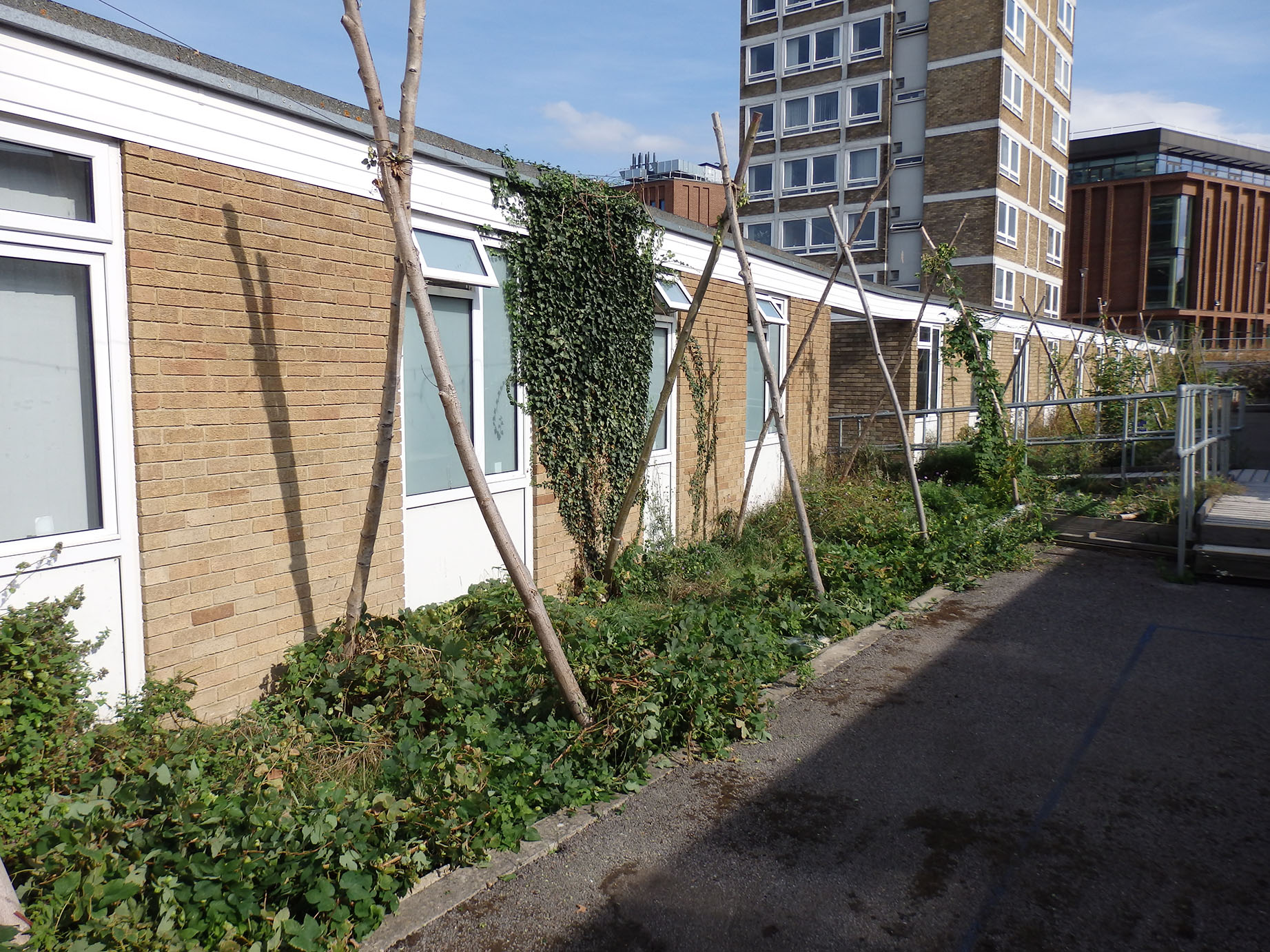Another Heritage & History post is here! This time we are chatting to one of the University’s Emeritus Professors, Peter Vujakovic. We will be talking to Peter about all things hops and so I will be handing the mic over to him to educate you on why we grow hops at Christ Church and what we do with them. I hope you find this an interesting read and you learn something new!
A little about Peter…
He is an Emeritus Professor of Geography, which means, whilst he is formally retired, he remains a member of the university and actively engaged with the sustainability team and its work. Peter is also still engaged as a geographer in research related to heritage, landscape and environment. He co-chairs the university’s Sustainable Heritage Working Group which coordinates activities related to our campus green spaces that lie within the Canterbury UNESCO World Heritage Site.
His teaching history is that he taught geography and environmental science at a university level for thirty-five years and he has been involved at Christ Church since 1995.
His experience speaks for itself, so let’s find out more…
What does Sustainability mean to you?
Sustainability is the essentially an approach to managing the earth’s systems and resources is a manner that fulfils our needs but does not prejudice the requirements of others across the world or of future generations. It is as much about cultural and social equity and justice, as a healthy ecology – although for me biodiversity loss is a specific major concern.
I was involved early on in the environmental and development movement, back in the 1980s, at a national level as a member of the World Development Movement (WDM) a lobbying organisation and early advocate of fair trade. As a geographer it seemed so obvious to me that the two themes, socio-economic development and the environment, which are undeniably linked. It was not so obvious to people working in these fields until the 1987 Brundtland report ‘Our Common Future’ defined ‘sustainability’ and brought this thinking to a wider audience. How sustainability is delivered remains, however, deeply contested.
Fancy learning a little more about the Sustainable Development at Canterbury Christ Church University, the Sustainability Director Peter Rands wrote a report all about it in May 2020.
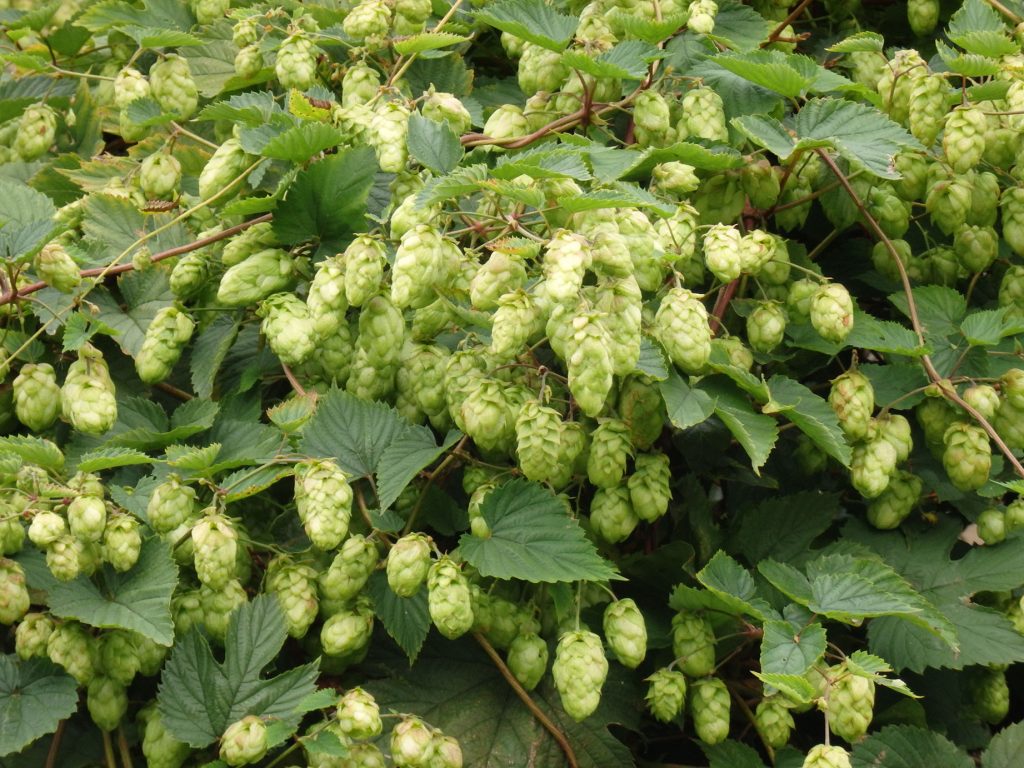
What are hops and where are they located on Campus?
The hops are a prime example of the idea that you should “think globally, act locally”. They are just one small part of a broader set of sustainability initiatives through which we celebrate the unique ‘sense of place’ that we are lucky enough to have because we are a UNESCO World Heritage Site. I originally came up with the idea of ‘Christ Church Bioversity’ and launched the initiative in 2012. I designed to bring three key themes together by nurturing our campus green spaces. It involves celebrating our historic location, acknowledging our status as a Church of England foundation (more on this soon), and managing our green resource thoughtfully.
The Bioversity initiative took-off and many others have now contributed far more than me to its success. It now includes a health and well-being garden, our Jubilee Orchard, student and staff allotments, herb garden, and more, including the hop production on campus.
In terms of appearance, it is the flower or ‘cone’ of the hop plant that is used to flavour beer, although originally used as a preservative. Hops impart the bitter flavour characteristic of certain beers. We have grown them for some years in the area between Moore and Fisher Buildings, but plan to enlarge our planting to incorporate a bank close to the new ‘Building 2’.
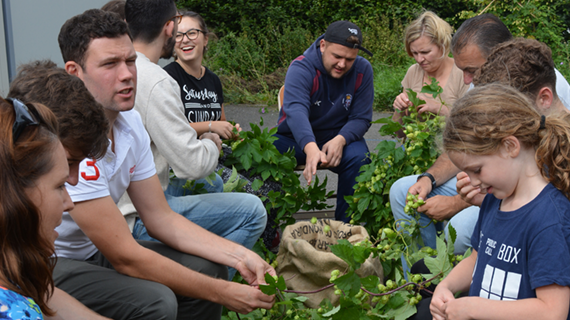
Why do we grow them?
‘Hops gardens’, as they are known, are a traditional element of the Kentish countryside although much diminished in number and area from their heyday in the nineteenth century. The idea of growing hops for our own beer originated during discussions about the Bioversity initiative. Rob Thrower, a dearly remembered colleague, made the suggestion that we should produce our own a beer as the only significant medieval structure on our campus was the gable-end of the monastery’s brewhouse! It was an idea that struck a chord with many of us and was finally realised with our first brew of ‘Green Chapel Ale’ in 2015.
Some hops history…
Hop cultivation for beer was introduced from Flanders to Kent at the end of the 15th century so it is unlikely that the monks would have grown them for long, if at all, at St Augustine’s; the abbey was closed and much of it reduced to ruin by Henry VIII in 1538. However, the monks would have produced ale for their use long before hops came back to Britain. In any case our green hop ale is as much a celebration of the rural heritage of Kent as about our place in Canterbury. The British Hops website has lots more to say about the history of hops, if you’re interested!
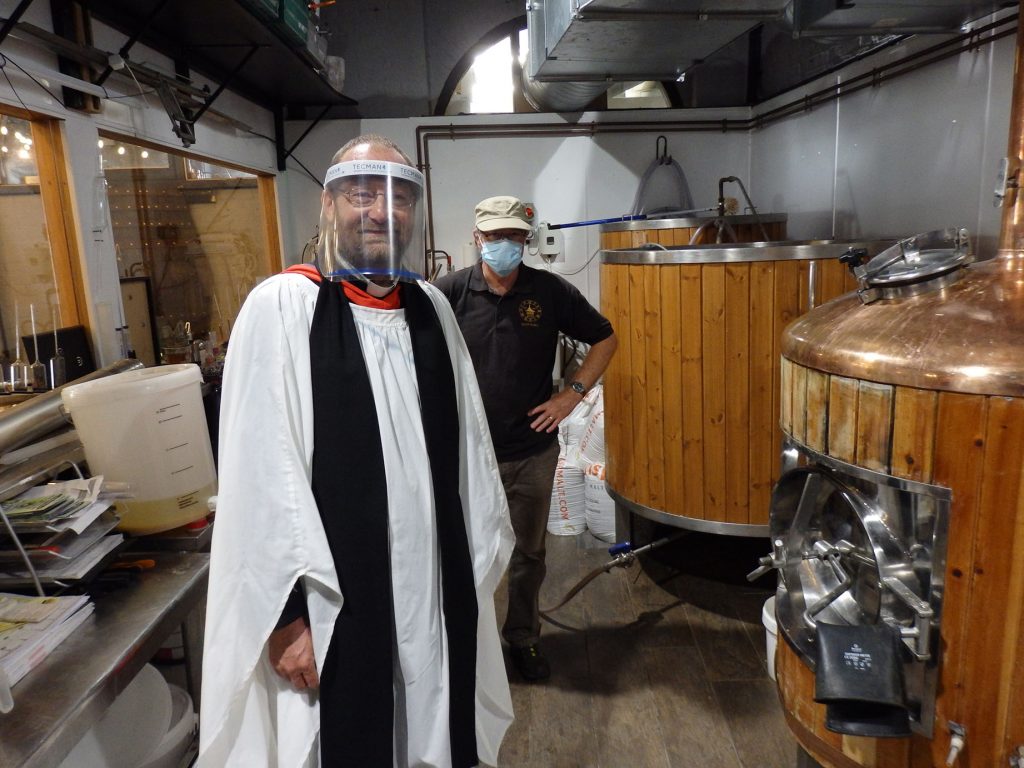
How does it benefit the University and its students to grow hops?
The annual production of our green hop ale has become a tradition, not just at Christ Church, but with our friends in the sustainability community nationwide. It is a good way to engage people with the sustainability agenda. Each year we harvest the hops in late summer – it is a wonderful event with staff and students joining in. The crop is then carried on foot in hop sacks to our brewer, the Canterbury Brewery & Distillers. We process from the hop garden to the brewhouse wall, where the crop is blessed by the Senior Chaplain or the Dean of Chapel before being walked through the city to our brewer where it receives a second blessing as the hops are added to the brew. To be a ‘Kentish green hop ale’ the fresh, undried hops must be added to the brew within twelve hours of picking! The ale is then brewed and bottled for us.
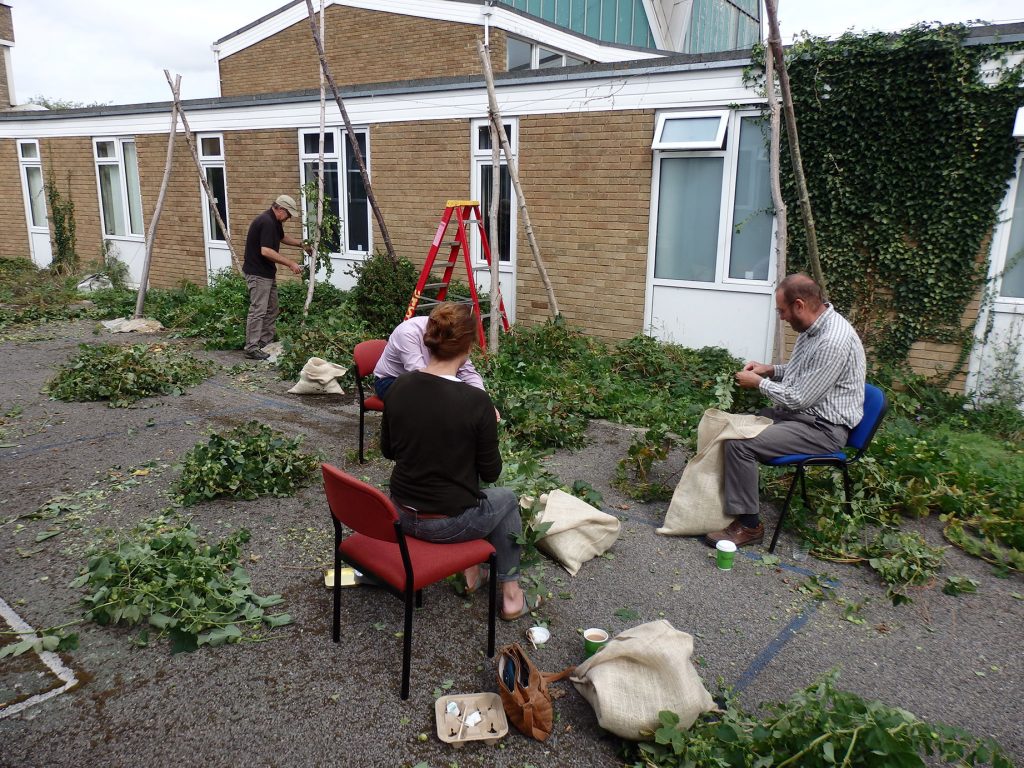
This is not, however, the end of our direct involvement. Students are involved in creating the marketing for each batch and designing the bottle label. Because we value this input the name of the brew changes each year, setting a new challenge for the students involved. In 2020, due to COVID, this job was undertaken by members of the sustainability team and been named ‘Hop Picker’s Tipple’ as a nod to the hard work students and staff put in each year. The label features a painting of John Hills, the Sustainability Projects Officer, who has worked so hard during lock-down to ensure we had a successful crop this year.
Our ale is ‘flagship’ initiative and something we value, but it is just one element of the hard work done to create a more sustainable university. Much of which is happens daily in terms of recycling, energy saving and other activities that do not have the same cache as the brew. All these things happen because of the dedication of students and staff who now understand the need for a sustainable future.
We hope you enjoyed learning about more about the Christ Church Bioversity initiative and why we grow hops on Campus. If you want to learn more, please have a look at the pages we’ve linked along the way; they go into lots of details and are really interesting reads if you’re curious!
by Fran Allen, SGO Projects Officer #learningforthefuture in conversation with Emeritus Professor Peter Vujakovic
 Sustainability
Sustainability Felicity Brambling-Wells
Felicity Brambling-Wells 1406
1406